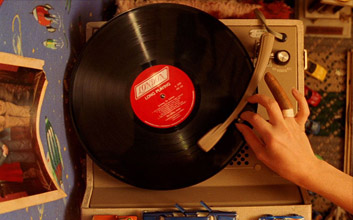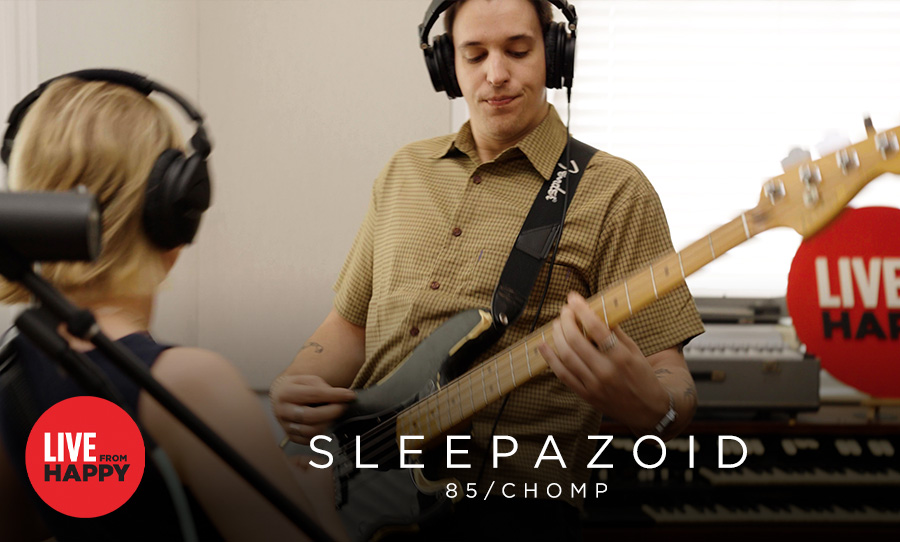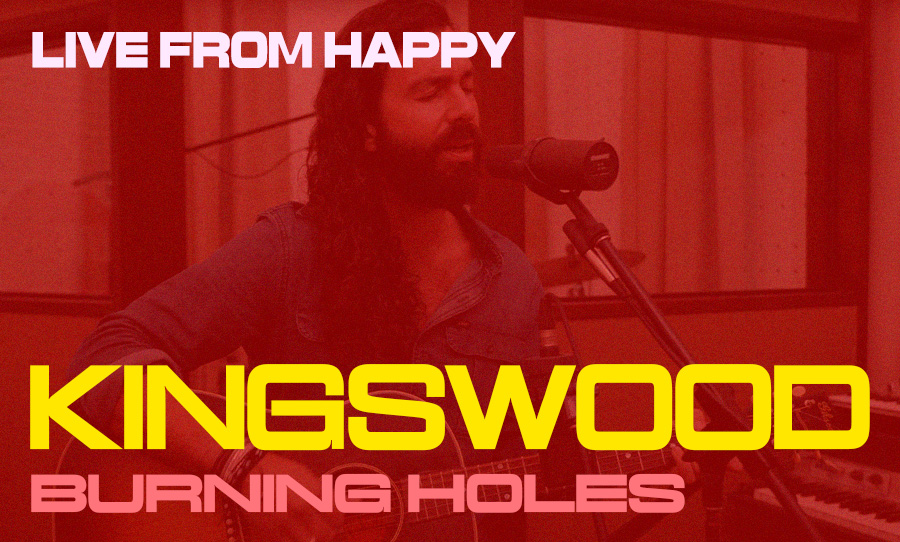Wes Anderson, alongside music supervisor Randall Poster, has curated musical scores that have become almost as iconic as his use of symmetrical wide lens shots and estranged parental figures. It’s with these grandiose statement soundtracks that Anderson has cemented his place as one of the most innovative and creative film directors of our time.
With Anderson’s latest film, Isle Of Dogs, just around the corner, we take a moment to look back at the soundtracks of all of the auteur’s movies.
The magic of Wes Anderson soundtracks: how this generation’s most iconic auteur uses music to help narrate his whimsical films.
Bottle Rocket
Anderson’s debut, Bottle Rocket, follows the misadventures of friends Dignan (Owen Wilson), Anthony (Luke Wilson), and Bob (Robert Musgrave), as they escape their former lives and haphazardly attempt to become full-time thieves.
As a debut, the film is yet to house the highly stylised visuals that have become the quintessential trademarks of an Anderson film. The soundtrack, however, shows immediate promise.
Composed alongside Devo’s Mark Mothersbaugh, the score meanders through a colourful variety of sound, each piece emphasising scenes staged across mental asylums, motels, heists, and the open road.
Jazz-heavy influences highlight the quirky nature of the characters as they successfully complete their initial escape and soon after, their first robbery. Once on the run, the mood turns amorous as Anthony meets his Paraguayan love interest, Inez. Tracks from Cuban jazz artist Rene Touzet work to emphasise the thrill of new- found romance, as the fugitives befriend Inez and her colleagues at a bordertown motel.
The score returns to its jazzy beginnings once Dignan and Anthony venture back to the city, but not before using The Proclaimers’ Over And Done With to score Dignan’s exit scene. The band’s Scottish accents are distinct from the rest of the instrumental-heavy soundtrack, but this makes the moment all the more poignant.
Rushmore
It’s in Anderson’s second film, Rushmore, that we begin to see him etch out his stylistic flair. Co-written with Owen Wilson, the film sees Jason Schwartzman play Max Fischer, an eccentric 15-year-old caught in a love triangle with school-teacher Rosemary Cross (Olivia Williams) and steel tycoon Herman Blume (Bill Murray) in an off-beat coming-of-age movie based around the prestigious private school, Rushmore.
Anderson originally intended the film’s score to come entirely from The Kinks, but instead, working again with Mothersbaugh, the soundtrack became an artful blend of 60s and 70s pop and Mothersbaugh’s own compositions.
While The Wind and Here Comes My Baby by Cat Stevens (who Poster fought to get on the tracklisting, as Stevens had, by that time, stopped licensing his music), Oh Yoko by John Lennon, A Quick One While He’s Away by The Who, and Makin’ Time by The Creations all make well-timed appearances, but it’s ultimately The Faces’ Ooh La La that steals the show.
It’s with The Faces that we see Fischer overcome his incessant need for superiority and accept his both his shortcomings and his successes. The lyrics “I wish that I knew what I know now when I was younger” ring heartwarmingly true as Fischer slow dances with his second but better-suited love interest.
The Royal Tenenbaums
The Royal Tenenbaums is arguably the most iconic Wes Anderson film based on its soundtrack alone. While the film’s predecessors contain a healthy mix of released tracks and composed instrumentals, the score for The Royal Tenenbaums is rife with sourced songs by The Rolling Stones, Ramones, Nico, The Velvet Underground, Elliot Smith, and Erik Satie.
Anderson, working once more with Mothersbaugh, worked towards a bolder soundtrack to match the boldness of the film. The Mutato Muzika Orchestra’s harpsichord cover of Hey Jude is nothing short of a spectacular building momentum throughout the introductory scene, establishing an intensity that ebbs and flows throughout the narrative while never failing to hold your interest.
Nico’s These Days paints a bittersweet backdrop to the iconic reunion between Margot (Gwyneth Paltrow) and Richie Tenenbaum (Luke Wilson). The German singer (actor/model/Warhol muse) sings a deep and sorrow-filled tale of living a lacklustre existence while reflecting on her past. The song fits almost too well with the slow-motion shot of Richie being reunited with his forbidden love, the smokey-eyed Margot Tenenbaum – the colliding narratives so seamlessly intertwined that one might suspect the scene was written around the song.
Most notable of the entire soundtrack, however, is Elliott Smith’s Needle In The Hay. An outlier not only because of its modernism in comparison to its 60s- and 70s-era counterparts, but because of the way Smith’s harrowing voice pull the audience out of the world Anderson has so delicately created.
Used to score the scene in which Richie Tenenbaum attempts suicide, Needle In The Hay’s hammering guitar immediately underlines the reality of the situation. The warm tonal hues change to a sterile blue-white, and it’s with Smith’s gentle vocals we feel, for the first time, the true gravity of the character’s predicament.
The Life Aquatic with Steve Zissou
The Life Aquatic is perhaps the most polarising of Anderson’s work. While fans rave about the colourful approach to hard-hitting subjects, sceptics find the doll-house perfectionism pretentious and unrelatable. The film follows main character Steve Zissou (Bill Murray) and his mismatched crew as they attempt to exact revenge on the enigmatic Jaguar shark responsible for the death of one of Zissou’s crew.
The score, once again produced with the help of Mothersbaugh, takes Anderson’s mishmash of iconic 60s rock and interlude instrumentals a step further. Musical cameos from The Zombies and Sigur Rós on paper sound slightly left-of-centre; because they are.
Though it’s not uncommon for Anderson, in The Life Aquatic such tracks seem particularly out of place. While it doesn’t necessarily make sense, it can be argued that nothing is off limits when it comes to the documentation of fictional aquatic creatures, the songs adding another layer of whimsical delight.
The addition, Mothersbaugh’s own arrangements, bring an added depth to the score. Working with Australian composer Sven Libaek, Motherbaugh’s tracks provide jazz-soaked and fluid offerings that fit, in contrast, near seamlessly in the context.
The soundtrack’s hero, however, is undoubtedly Seu Jorge’s diegetic covers of David Bowie. Sung in both English and Portuguese and always with an nylon-string acoustic guitar, Jorge’s character provides almost novel breaks in the narrative to provide tender renditions of well-known classics. While they may take a moment to recognise, the songs are a welcome addition to Anderson’s aquatic adventures.
The Darjeeling Limited
While the score for The Darjeeling Limited lists three tracks by The Kinks and one from The Rolling Stones, it’s Anderson’s inclusion of Indian composer Satyajit Ray’s instrumentals that remain the highlight of the soundtrack. The storyline, which follows three estranged brothers as they attempt to reconnect over one of their near deaths, moves elegantly throughout the Indian landscape on the train, The Darjeeling Limited.
The film manages to balance the fine line between being adventurous without being overly exotic or touristy. It’s in the soundtrack that Anderson reiterates the homeliness of India in a way that portrays the colourful continent as both welcoming and mysterious.
Works by Ray, as well as other composers from the Cinema of India, juxtaposed against the typical Anderson britpop affair makes for a perfect blend of worlds: the known and the unknown.
Fantastic Mr Fox
Wes Anderson’s first animated feature, Fantastic Mr Fox, marks the first of many collaborations with French film composer, Alexandre Desplat. While many questioned Anderson’s decision to stray from his usual partner, Mothersbaugh, it was ultimately Desplat’s ability to score the wild array of genres housed in a single children’s film that made the decision a clear one.
Sandwiched between two tracks by The Beach Boys, Desplat’s string, woodwind, and horn-heavy score narrate the whimsical adventures of Mr Fox and his family as they attempt to defeat three antagonistic farmers.
While the film feels oddly self-aware for what is supposedly a children’s animation, Desplat manages to keep the mood flitting between playful and adventurous while never being too serious.
Moonrise Kingdom
In comparison to Fantastic Mr Fox, Anderson’s seventh feature film, Moonrise Kingdom, plays host to a decidedly more serious score. Comprised almost entirely of classical pieces by Benjamin Britten and the New York Philharmonic, the soundtrack presents an overly theatrical backdrop to the adventures of young lovers, Sam (Jared Gilman) and Suzy (Kara Hayward).
Britten’s Noye’s Fludde plays a focal role in not only the soundtrack, but in the narrative, Anderson explained his personal connection to the piece during a press conference in Cannes:
“The play of Noye’s Fludde that is performed in it — my older brother and I were actually in a production of that when I was ten or eleven, and that music is something I’ve always remembered, and made a very strong impression on me. It is the color of the movie in a way.”
The classical score, however, isn’t without Anderson’s trademark use of juxtaposition. Works by iconic Western singer-songwriter Hank Williams alongside Françoise Hardy’s sensual Le Temps de L’amour diegetically punctuate various parts in the film.
It’s in Moonrise Kingdom we see Anderson stray away from the usual whimsy of era-based score choice, a conscious decision that makes the young love film all the more tender.
The Grand Budapest Hotel
The soundtrack of The Grand Budapest Hotel – in a style not too dissimilar from The Darjeeling Limited – works to accentuate the film’s setting. The score is comprised almost entirely by works from Alexandre Desplat.
Set in the fictional Eastern-European country of Zubrowka, the tracks are based on vaguely European themes, with a flurry of balalaikas, alpine horns, zithers, and cimbaloms guiding the more familiar strings, piano, and percussion. It seems near impossible to definitively place your finger on the exact genre of any one work, but it’s this notion of mystery that shrouds the characters and the storyline that piques our interest as we are slowly given pieces to the puzzle that reveal the enigmatic backstory to the titular Grand Budapest Hotel.
The soundtrack’s vagueness should not, however, insinuate that Desplat’s work lacks direction. The elegant bunny-hop piano of Mr. Moustafa (see below) morphs into the bittersweet charm of The War (Zero’s Theme), marking pivotal moments in the film as we uncover the various sides to the main character.
It’s in gentle but purposeful key changes in overarching themes that pull the narrative along, highlighting thematic shifts and character development as well as adding theatrics to particularly noteworthy scenes.
Isle of Dogs
The forthcoming animated feature has already had its soundtrack listing released, and contains many of the usual suspects alongside heavy Japanese influences: taiko drum instrumentals courtesy of Alexandre Desplat, an iconically Western standout piece by West Coast Pop Art Experimental Band, and a couple of tracks used by Japanese film director and screenwriter, Akira Kurosawa.
Anderson, over his career, has set himself an increasingly high benchmark to reach, but there is no doubt that Isle of Dogs – its narrative, mise en scène and, no doubt, soundtrack – will impress.




